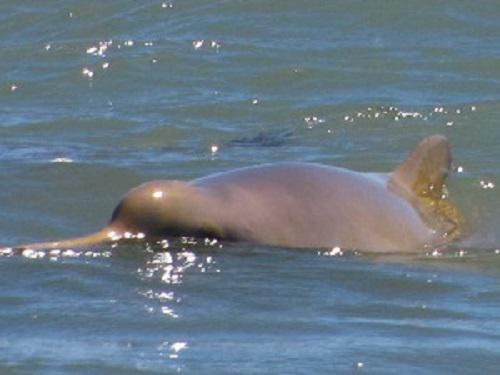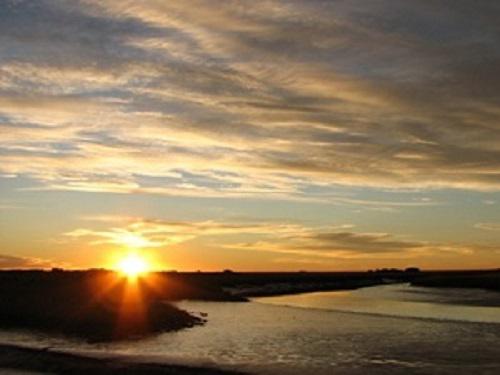Miguel Iniguez Bessega
Other projects
3 Nov 2015
Awareness, Eco-Tourism and Research: Conservation of Franciscana (Pontoporia blainvillei) and Bottlenose dolphins (Tursiops truncatus)
This project aims to raise the profile of the marine environment among communities inhabiting the Río Negro province to sustainably protect the marine mammals, in particular Franciscana and Bottlenose dolphins, from human-related threats. This will be achieved through increasing the scientific understanding of the dolphins biology and ecology and informing and educating a wide cross section of the community including schools, universities, local authorities, the fishing community, the eco-tourism providers and visitors. We will also aim to establish responsible whale watching and advocate for the establishment of a Regional Nature Reserve through collaboration with the Provincial government.

Franciscana, Río Negro Estuary, Patagonia Argentina © Fundación Cethus
The programme will result in more effective and sustained conservation of Franciscana and Bottlenose dolphins and their habitats. The survey work will provide a clearer understanding and increase the scientific evidence of how these animals use the Río Negro estuary. The data gathered during the project will help us describe exactly when the animals are most abundant and when they are most vulnerable, (e.g. during breeding and calving season). The studies will also allow us to assess a correlation between the noise and the dolphins’ behaviour. An improved understanding of these animals’ conservation needs will enable us to develop protection measures that are adequate for the requirements of this coastal habitat. Although it is considered that South America is an area lesser polluted that others in the Northern Hemisphere, there is little information about the presence of inorganic trace element in cetacean species and few data for Northern Patagonia. Assessing the possible presence of inorganic trace elements in the study area will generate baseline information. Future identification of potential sources of such pollution may in turn allow discussion and plan for further mitigation strategies. Tissue samples obtained from stranded individuals will be added to current studies on population genetics on Franciscana (along with other institutions) and Bottlenose dolphins from the ERN.

Landscape of Río Negro Estuary, Patagonia Argentina home of Franciscana and Bottlenose dolphins. © Fundación Cethus.
The project will increase community engagement. Encouraging community-led solutions to mitigate the risk of entanglement of Franciscana dolphins in fishing gear will help build and nurture a sense of ownership and responsibility over the area’s natural heritage and will help reduce the risk of local activities and industries to the dolphins and their habitat. Responsible, land-based dolphin watching activities will support local economies and promote conservation of the marine environment. We will make specific recommendations to the province’s government, with whom we have developed a positive working relationship, on how to reduce negative impact on the coastal environment of Río Negro estuary through enactment of regulations and sustainable management of the region’s natural resources. Data collected and activities developed during this project will help us to work towards the creation of a Regional Nature Reserve in the area, working together with Provincial and local authorities, NGOs and the local community. Collaboration with the wider scientific community will help ensure protection for the dolphins throughout their range.